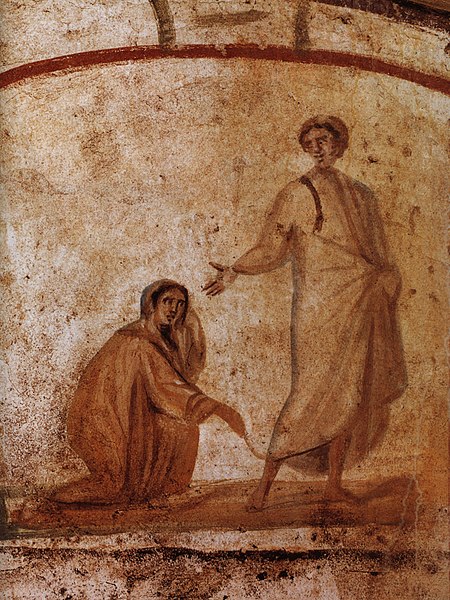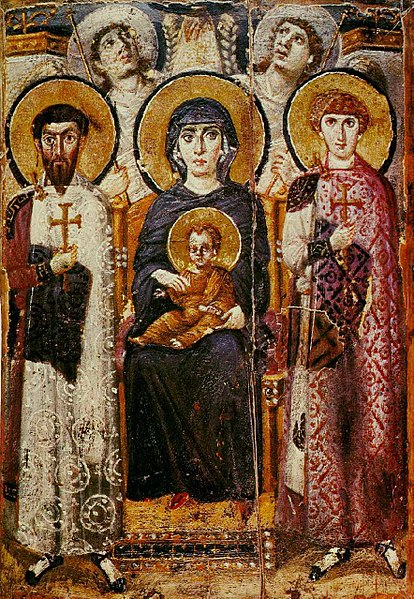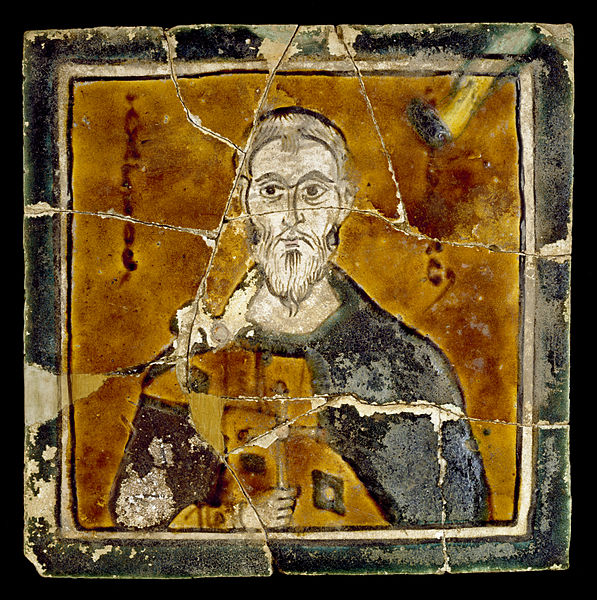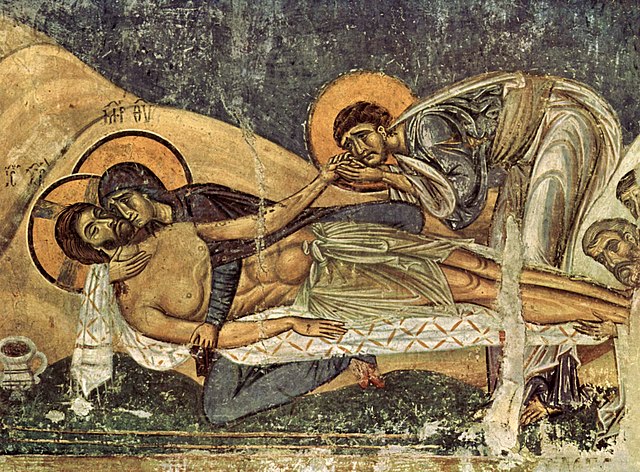Early Christian art and architecture
Early Christian art and architecture is the art produced by Christians, or under Christian patronage, from the earliest period of Christianity to, depending on the definition, sometime between 260 and 525. In practice, identifiably Christian art only survives from the 2nd century onwards. After 550, Christian art is classified as Byzantine, or according to region.
Jesus healing the bleeding woman, Roman catacombs, 300–350
The Brescia Casket, 4th-century ivory
Good Shepherd from the Catacomb of Priscilla, 250–300
Noah praying in the Ark, from a Roman catacomb
Byzantine art comprises the body of artistic products of the Eastern Roman Empire, as well as the nations and states that inherited culturally from the empire. Though the empire itself emerged from the decline of western Rome and lasted until the Fall of Constantinople in 1453, the start date of the Byzantine period is rather clearer in art history than in political history, if still imprecise. Many Eastern Orthodox states in Eastern Europe, as well as to some degree the Islamic states of the eastern Mediterranean, preserved many aspects of the empire's culture and art for centuries afterward.
One of the most famous of the surviving Byzantine mosaics of the Hagia Sophia in Constantinople – the image of Christ Pantocrator on the walls of the upper southern gallery, Christ being flanked by the Virgin Mary and John the Baptist; c. 1261; 4.08 x 4.2 m
Icon of the enthroned Virgin and Child with saints and angels, 6th century, Saint Catherine's Monastery, Sinai
The Arab Saint Arethas depicted in traditional Byzantine style (10th century)
Frescoes in Nerezi near Skopje (1164), with their unique blend of high tragedy, gentle humanity, and homespun realism, anticipate the approach of Giotto and other proto-Renaissance Italian artists.







